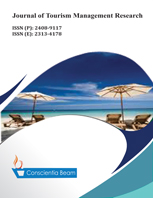Analysis of the Temporal and Spatial Distribution Characteristics and Influencing Factors of Religious Sites on the Maritime Silk Road: A Case Study of Quanzhou
DOI:
https://doi.org/10.18488/31.v9i2.3137Abstract
Multiple religious cultures coexisted and prospered.in Quanzhou. Using the data from 608 religious sites in different dynasties as the main time nodes, the spatial distribution of religious sites and their evolution process were analyzed from the perspectives of spatial distribution type, trend, density and equilibrium with Geographic Information System (GIS). Findings show: The spatial distribution of religious sites is concentrated, the agglomeration situation is obvious, and the degree of agglomeration is increasing. The religious sites as a whole show a trend from southeast to northwest, and spreading from the coast to the inland areas. The high-density core area distribution is characterized by multi-core to single-core accumulations, and the number of high-density core areas is reduced. Religious sites are spatially represented by an unequal probability distribution, with local agglomeration centered on Quanzhou City, but the overall trend is constantly balanced; the spatial distribution of religious sites is influenced by both human and natural environments.

